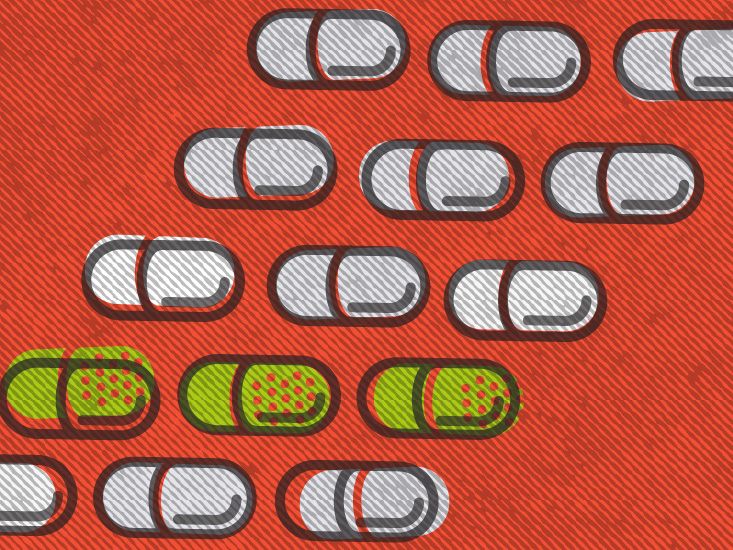Got that nagging chestpain that never seems to go away? If medication and stents haven't helped, there's a laserbased option that might just be the answer transmyocardial revascularization (TMR). In the next few minutes you'll find out exactly what the procedure does, who's a good candidate, and what you can expect afterward.
No fluff, just straighttothepoint answers you're looking for plus the pros, the cons, and realworld tips from doctors who actually perform TMR.
What Is TMR
Transmyocardial revascularization, sometimes called transmyocardial surgery or heart laser therapy, uses a precise CO laser to drill tiny channels (about 1mm wide) straight into the heart muscle. The idea is simple: those channels become new pathways for blood to reach areas that are starved of oxygen.
Unlike traditional bypass surgery (CABG) or percutaneous coronary intervention (PCI), TMR doesn't require a heartlung machine. It's done on a beating heart through a small leftside thoracotomy, which means a shorter hospital stay and less overall trauma.
How TMR Differs From Other Angina Treatments
| Treatment | Invasiveness | Typical Candidates | Key Goal |
|---|---|---|---|
| Transmyocardial Revascularization | Minimally invasive | Refractory angina, diffuse CAD not amenable to PCI/CABG | Lasercreated channels for perfusion |
| Coronary Artery Bypass Grafting (CABG) | Openheart surgery | Multivessel disease, suitable anatomy | Redirect blood around blockages |
| Percutaneous Coronary Intervention (PCI) | Catheterbased | Focal lesions, suitable vessels | Stent to open narrowed artery |
| Medical Therapy | Noninvasive | All patients, especially highrisk surgery | Control symptoms, slow disease |
Who Benefits
If you're living with chronic angina that persists despite maximum medication, or you've already had one or more bypasses and the heart's arteries are too tangled for another surgery, you might be a good match for TMR.
Typical Clinical Scenarios
- Severe, refractory angina (Canadian Cardiovascular Society class IIIIV)
- Diffuse coronary artery disease that can't be bypassed or stented
- Previous CABG with graft failure or limited graft options
- High surgical risk due to age, lung disease, or other comorbidities
When TMR Isn't Recommended
- Extensive scar tissue in the left ventricle (makes channel creation unsafe)
- Active infection or uncontrolled arrhythmias
- Leftventricular ejection fraction below 25%
Procedure Steps
Let's walk through a typical TMR day, from the moment you step into the hospital to the final laser pulse.
PreOp WorkUp
Your cardiology team will line up a battery of tests: blood work, ECG, echocardiogram, and a stress test to map out exactly where the heart is struggling. Medications are reviewed, and you'll meet the surgeon to discuss the laser plan.
Anesthesia & Positioning
You'll be under general anesthesia, lying on your left side. A small incision (about 68cm) is made between the ribs, giving the surgeon direct access to the beating heart. No heartlung machine is needed the heart keeps pumping while the laser fires.
Laser Delivery
The surgeon uses a specialized CO laser that is synchronized with your heart's rhythm (ECGgated). Each channel is spaced about 1cm apart, creating a pattern that covers the most ischemic regions. The laser pulses last only milliseconds, so the tissue neither overheats nor damages surrounding structures.
Visual Aid Suggestion
If you were looking at a diagram, you'd see a gridlike pattern of tiny tunnels across the left ventricle, each one a potential highway for blood.
Duration & Monitoring
The whole operation typically runs about two hours. Throughout, the team watches a transesophageal echo (TEE) to confirm channel placement and to make sure the heart stays stable.
Outcome Expectations
What most patients want to know is: "Will my chest pain actually get better?" The data say yes, for the majority.
Angina Relief
Studies from the Texas Heart Institute and several randomized trials show that 8090% of patients experience a reduction of at least two CCS angina classes within six months. That means "I can walk farther without stopping for a breather."
Survival & Mortality
Perioperative mortality hovers around 15%, comparable to other major cardiac surgeries. Longterm survival at five years is roughly 65% for TMR patients versus 52% for those who stick with medication alone, according to a NIHsponsored trial.
QualityofLife Improvements
Patientreported outcomes (Seattle Angina Questionnaire, SF36) consistently show better physical functioning and less emotional distress after TMR.
Key RCT Results (quick glance)
| Study | Sample Size | Angina Reduction | 5Year Survival |
|---|---|---|---|
| Allen etal., 2000 | 112 | 84% achieved 2 CCS class drop | 68% |
| Aaberge etal., 2002 | 98 | 79% reported significant relief | 64% |
| NIH MultiCenter Trial, 2018 | 210 | 81% improvement | 66% |
Risks & Mitigation
No surgery is riskfree, and TMR is no exception. Knowing the common and rare complications helps you weigh the balance.
Common Complications
- Arrhythmias (especially premature ventricular contractions)
- Bleeding from the thoracotomy site
- Transient low cardiac output
- Wound infection
Rare but Serious Issues
- Ventricular perforation (extremely uncommon)
- Stroke (related to emboli, not the laser itself)
- Prolonged ICU stay due to severe heart failure
Prevention Strategies
Experienced centers follow a strict protocol: optimizing blood pressure and electrolytes before surgery, using ECGgated laser firing to avoid mistimed pulses, and keeping a vigilant postop telemetry monitor for the first 48hours. According to a study from Brigham &Women's Hospital, the incidence of serious arrhythmias drops dramatically when these steps are followed.
Recovery Timeline
Knowing what to expect after you leave the operating room can turn anxiety into confidence.
Hospital Stay
Most patients spend 47days in the hospital. The first day is usually in the ICU for close monitoring, then you move to a regular floor once vital signs stabilize.
FirstMonth Milestones
- Day23: Chest tubes removed, pain managed with oral meds
- Week1: Light ambulation around the ward, breathing exercises
- Week24: Followup echo to confirm channel patency, gradual return to daily activities
Return to Work & Activity
If your job is mostly deskbased, many patients feel ready to go back in 46weeks. For physically demanding work, aim for 812weeks and discuss a tailored plan with your cardiac rehab team.
Cardiac Rehab Tips
Structured rehab programs teach a safe exercise regime, help you taper off nitroglycerin, and provide nutrition counseling. Think of it as a "graduation ceremony" for your heart.
Patient Stories
Stories stick in our minds better than numbers. Here's a quick glimpse of realworld experience.
John's Journey
John, 62, lived with daily chest pressure for years. He'd already had two bypasses and three stents, yet his angina stayed stubborn. After a thorough evaluation, his surgeon recommended TMR. Six months later, John says he can finally play with his grandchildren at the park without stopping every few minutes. "It feels like I got a second chance," he told his team.
Surgeon Insight
Dr. Patel, a cardiac surgeon at Brigham &Women's, explains, "We don't bring TMR to every patient only those who have truly exhausted standard options. When it works, the improvement in quality of life is remarkable, and that's why we keep refining the technique."
Talk To Your Doctor
Ready to explore whether TMR fits your situation? Here are a few questions to put on your checklist for the next cardiology visit:
- What specific areas of my heart are ischemic, and how many laser channels would be needed?
- What are the exact risks for someone with my health profile?
- Will I need to stay on any heart medications after the procedure?
- Is there a center near me with a dedicated TMR program?
- Can I get a second opinion to confirm my candidacy?
Bring recent imaging studies, a list of all medications, and a written set of your questions. The more prepared you are, the smoother the conversation will be.
Future Directions
The story of TMR isn't finished yet. Researchers are mixing laser therapy with stemcell delivery, hoping to boost heart muscle regeneration even more. Newer laser platforms promise tighter temperature control and even shorter channel creation times. Early-phase trials suggest these combos could further shrink angina scores, but larger studies are still pending.
Keeping an eye on clinical trial registries and asking your doctor about enrollment options can give you access to cuttingedge therapies before they become mainstream.
Conclusion
Transmyocardial revascularization offers a viable, laserbased option for patients stuck with chronic angina when conventional bypass or stenting isn't possible. It creates tiny channels that improve blood flow, reduce pain, and enhance quality of life, while keeping mortality comparable to medical therapy alone. Risks are modest and manageable in experienced centers like Brigham&Women's or the Texas Heart Institute. If you're living with refractory chest pain, discuss the candidacy criteria, expected recovery, and longterm outlook with a cardiac surgeon who routinely performs TMR. Your next step? Schedule a consultation, bring your recent tests, and ask the key questions listed above because informed decisions start with the right information.
FAQs
What exactly does transmyocardial revascularization do for my heart?
It uses a CO₂ laser to create tiny channels in the heart muscle, allowing blood to flow directly into ischemic areas that cannot be reached by traditional bypass or stent procedures.
Who is considered a good candidate for TMR?
Patients with chronic, refractory angina (CCS class III‑IV) who have diffuse coronary disease that cannot be treated with PCI or CABG, or who have high surgical risk due to age or comorbidities.
How long is the recovery period after the procedure?
Hospital stay is typically 4–7 days. Most people resume light daily activities within 2–4 weeks and can return to full work (desk‑based) by 4–6 weeks, with cardiac rehab guiding a safe exercise plan.
What are the most common risks associated with TMR?
Common complications include arrhythmias, bleeding from the thoracotomy site, temporary low cardiac output, and wound infection. Rare serious issues such as ventricular perforation or stroke are very uncommon when performed at experienced centers.
Will I still need heart medications after TMR?
Yes. Most patients continue antiplatelet agents, statins, beta‑blockers, or nitrates as needed, although the dose of angina‑relieving drugs often decreases after successful symptom relief.
Disclaimer: This article is for informational purposes only and does not constitute medical advice. Always consult with a healthcare professional before starting any new treatment regimen.
Related Coverage
Spot the bicuspid aortic valve symptoms, know when to get help, and find lifestyle and treatment tips to keep your heart healthy....
Heart valve regurgitation can cause breathlessness, fatigue, and swelling. Learn causes, symptoms, diagnosis and treatment options....
Find safe and effective exercises for heart disease that help older adults stay healthy, strong, and energized without overexertion....
Try a heart disease diet packed with simple swaps, whole‑grain carbs, fatty fish and low‑sodium foods to cut cholesterol, lower blood pressure, and feel energized....
Cut the Camzyos cost with smart insurance steps, $10 copay programs, free echo assistance and foundation grants—start saving now....
An aortic stenosis murmur indicates a narrowed valve. Find out its sounds, symptoms, diagnosis steps, and treatment paths....
Heart disease can manifest through surprising physical signs like skin changes, swelling, vision issues, and more before diagnosis. Learn subtle symptoms....
Is your heart struggling to pump blood effectively? Find comprehensive information on congestive heart failure, its symptoms, causes, and available treatments....
Hypertrophic cardiomyopathy life expectancy is near normal; discover risk factors, survival, and treatments that extend life....
Find out how mitral valve prolapse presents, when to seek help, treatment options, and tips for living a healthy, active life....









